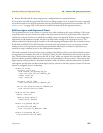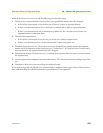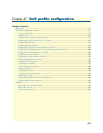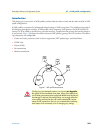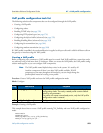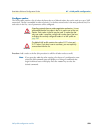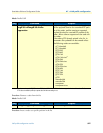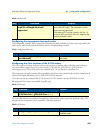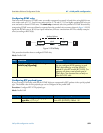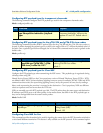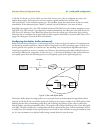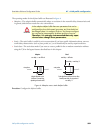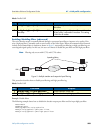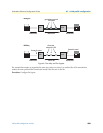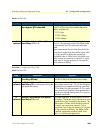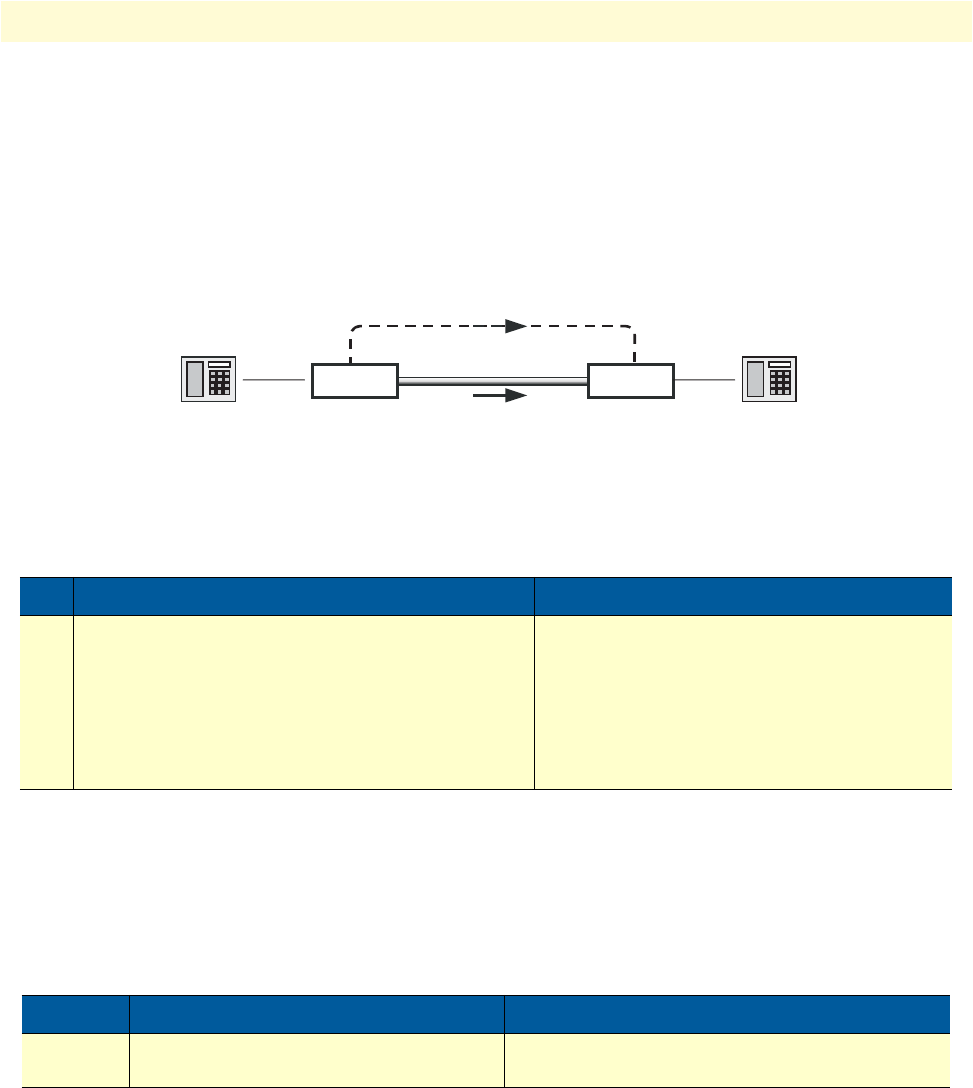
VoIP profile configuration task list 579
SmartWare Software Configuration Guide 47 • VoIP profile configuration
Configuring DTMF relay
Dual tone multi-frequency (DTMF) tones are usually transported accurately in band when using high bit-rate
voice codecs such as G.711. Low bit-rate codecs such as G.729 and G.723.1 are highly optimized for voice pat-
terns and tend to distort DTMF tones. The
dtmf relay command solves the problem of DTMF distortion by
transporting DTMF tones out-of-band or separate from the encoded voice stream as shown in figure 2. H.323
signals the DTMF tones as H.245 user input indications, SIP uses a mechanism of RTP to reliably transport
tones (according to RFC2833).
Figure 2. DTMF Relay
This procedure describes how to configure DTMF relay
Mode: Profile VoIP
Configuring RTP payload types
If you are using DTMF relay with SIP, the DTMF digits are transported in RTP packets with a special payload
type. The default value for this payload type can be configured in the profile VoIP.
Procedure: Configure RTP NTE payload type
Mode: Profile VoIP
Step Command Purpose
1 node(pf-voip)[pf-name]#dtmf-relay
{default|rtp|signaling}
Define how DTMF digits shall be transmitted.
You can configure the SIP gateway to send
DTMF digits either by using the SIP INFO
method or in the RTP stream (RFC 2833). The
gateway will always receive both types of
DTMF digits. The command has currently no
effect for H.323 calls.
Step Command Purpose
1 node(pf-voip)[name]#rtp payload-
type nte payload-type
Specifies the RTP payload-type for named tone
events NTE (RFC2833). Default: 101.
encoder decoder
payload
Signalling of dtmf tones
Generates dtmf tonesDetects dtmf tones



